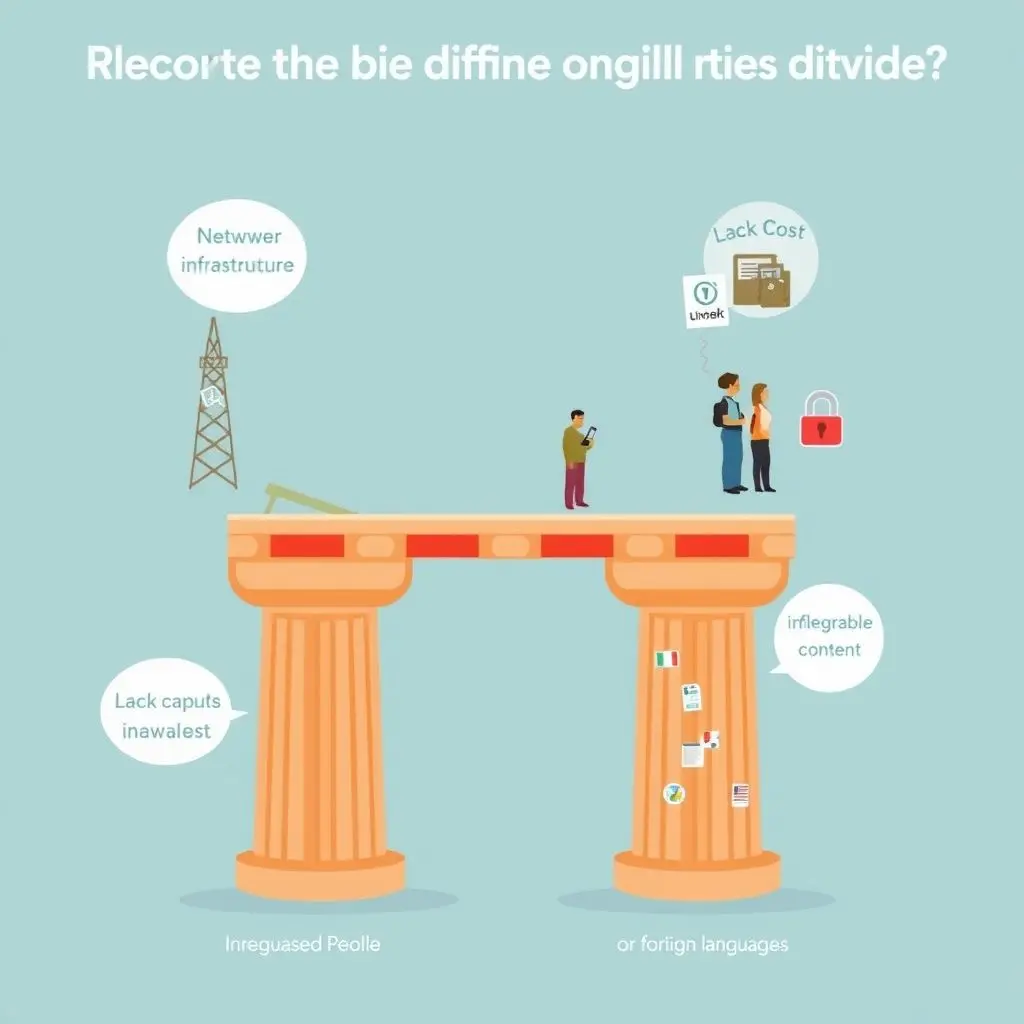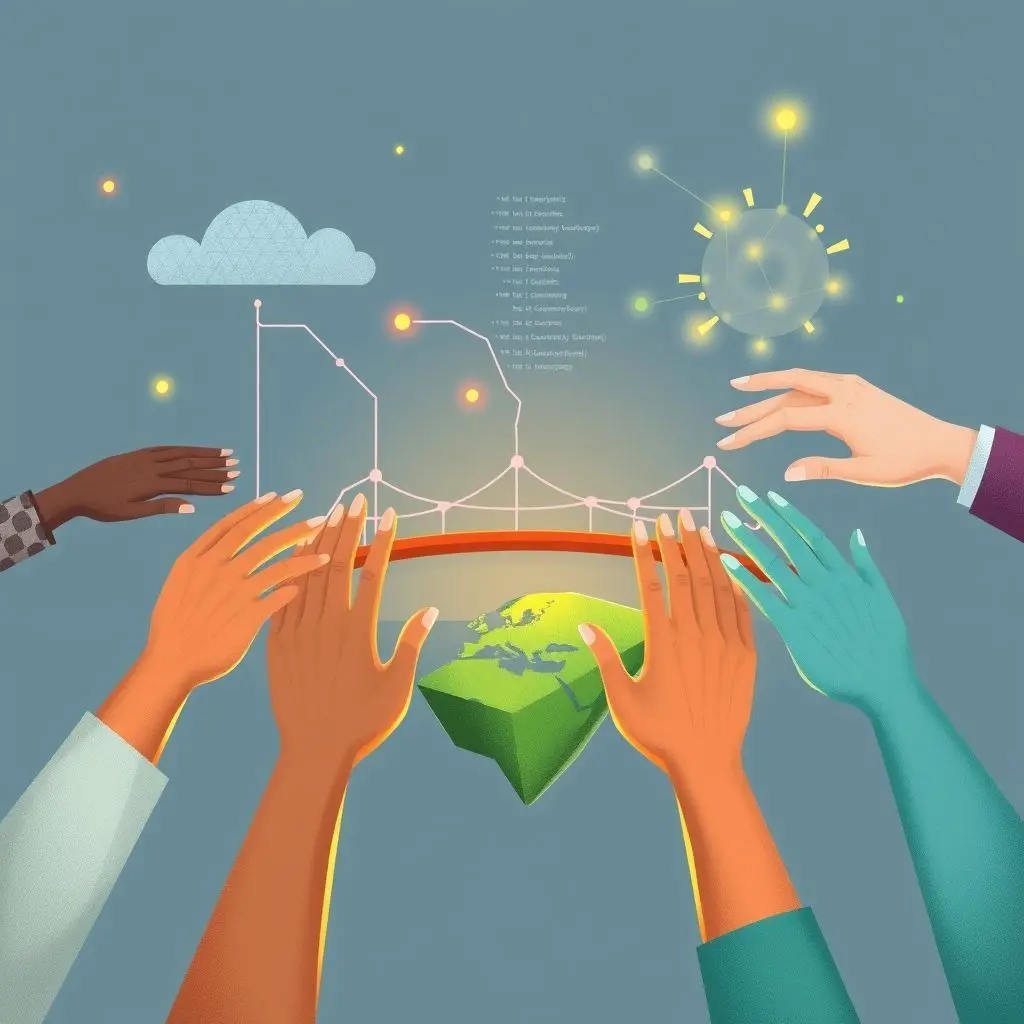That effortless swipe, the instant connection, the world at your fingertips – it feels universal, right? Accessing information, communicating, even working or learning from anywhere feels like second nature for many. But for millions around the globe, getting online isn’t a casual scroll; it’s a significant hurdle, an almost insurmountable climb akin to scaling a mountain without the right gear. This stark contrast isn’t just inconvenient; it’s the core of what we call the digital divide.
It’s far more complex than merely having a spotty Wi-Fi signal. The digital divide is a profound inequality, a chasm that separates those who have reliable, affordable access to digital technology and the skills to use it effectively from those who do not. And this divide has real, tangible consequences, impacting everything from a child’s education to an adult’s ability to find and keep a job, or even connecting with essential services and loved ones.
To get a quick visual grasp of this concept, check out this short video we put together:
As the video highlights, when access to the digital world is unequal, opportunity itself becomes unequal. This leaves huge populations playing a perpetual game of digital catch-up, widening existing social and economic disparities.
Table of Contents
Understanding the Digital Divide: More Than Just Connectivity
While often simplified to internet access, the digital divide is a multi-layered issue. True digital inclusion requires a confluence of factors:
- Access: This refers to the physical availability of reliable broadband infrastructure, especially high-speed connections. Rural and remote areas often lag significantly behind urban centers.
- Affordability: Even where infrastructure exists, the cost of internet service and digital devices (computers, tablets, smartphones) can be prohibitively high for low-income individuals and families.
- Digital Literacy and Skills: Having access is one thing; knowing how to effectively use the technology and navigate the online world safely is another. Lack of skills is a major barrier for many, particularly older adults and those with less formal education.
- Relevant Content and Applications: The online world must offer content that is accessible (e.g., in different languages, accessible formats) and relevant to the needs and interests of diverse communities.
Falling short on any of these pillars can place individuals and communities on the wrong side of the divide, limiting their ability to fully participate in modern society.

The Far-Reaching Impacts of Access Inequality
The consequences of the digital divide permeate nearly every aspect of life, exacerbating existing inequalities.
Education and the “Homework Gap”
The shift towards online learning, accelerated by recent global events, starkly exposed the educational impact. Students without reliable home internet or devices struggled to attend virtual classes, complete assignments, and access online resources. This “homework gap” puts disadvantaged students further behind, hindering their academic progress and future opportunities.
Employment and Economic Opportunity
In today’s job market, finding and applying for jobs often requires online access. Remote work is inaccessible without connectivity. Furthermore, many jobs require digital skills, and those without access to training or online learning platforms are at a disadvantage in developing these essential competencies. The divide limits economic mobility and perpetuates cycles of poverty.

Healthcare Access
Telemedicine has revolutionized healthcare access for many, offering consultations and monitoring from home. However, this relies entirely on digital access. Individuals lacking connectivity or digital literacy cannot benefit from these services, potentially delaying care or requiring difficult travel, disproportionately affecting the elderly, rural populations, and those with disabilities.
Social Connection and Civic Participation
Staying connected with family and friends increasingly happens online. The digital divide can lead to social isolation, particularly for older adults or those with mobility issues. Accessing government services, paying bills, engaging in civic discourse, and even voting are increasingly moving online, potentially disenfranchising those without digital access.
Exacerbating Existing Inequalities
Ultimately, the digital divide doesn’t create new inequalities from scratch; it amplifies existing ones based on income, geography, age, race, and disability. It’s a barrier that prevents marginalized communities from accessing the tools necessary to thrive in the 21st century.
Who is Most Affected?
While the digital divide is a global issue, certain populations are consistently found on the wrong side:
- Low-Income Households: Affordability is a primary barrier.
- Rural Communities: Lack of infrastructure makes reliable broadband access difficult or impossible.
- Older Adults: Often face challenges with digital literacy and adapting to new technologies.
- Certain Racial and Ethnic Minorities: Historical and systemic inequalities often correlate with lower rates of digital access and literacy.
- People with Disabilities: May require assistive technologies and accessible platforms, which are not always available or affordable.
Bridging the Gap: Steps Towards Digital Inclusion
Addressing the digital divide requires multi-faceted efforts involving governments, non-profits, the private sector, and communities:
- Infrastructure Investment: Expanding broadband networks to underserved urban and rural areas.
- Affordability Programs: Subsidies for internet service and devices for low-income households (like the Affordable Connectivity Program in the US, though its future is uncertain as of early 2024). Note: Information on specific government programs can change. Always verify current program status and eligibility.
- Digital Literacy Training: Offering free or low-cost classes and resources to help people develop necessary digital skills. Libraries, community centers, and non-profits play a crucial role here.
- Device Access: Programs providing refurbished or low-cost devices to those in need.
- Policy and Advocacy: Advocating for policies that prioritize digital equity and hold providers accountable for expanding access.

Frequently Asked Questions About the Digital Divide
Q: Is the digital divide just a problem in developing countries?
A: Absolutely not. While the divide is often starker in developing nations, significant digital inequality exists within developed countries like the United States, across different income levels, geographies, and demographics.
Q: How does the cost of smartphones affect the digital divide?
A: While smartphones offer mobile internet access, they may not be sufficient for tasks requiring larger screens, keyboards, or more processing power, like complex schoolwork or certain types of remote work. The cost of data plans can also be a barrier, even if the device itself is affordable.
Q: What is digital literacy?
A: Digital literacy is the ability to use digital technologies, communication tools, or networks to locate, evaluate, use, and create information. It also involves understanding how to use technology safely, responsibly, and effectively.
Q: Can libraries help with the digital divide?
A: Yes, public libraries are vital resources. They often provide free internet access, public computers, and digital literacy training, serving as critical hubs for digital inclusion in many communities.
Forging Connections: Building a More Inclusive Digital World
The digital divide is a persistent challenge in our increasingly connected world. It’s a barrier that prevents individuals and communities from accessing essential opportunities, participating fully in society, and achieving their potential. Recognizing the multifaceted nature of this divide—spanning access, affordability, and skills—is the first step.
Addressing it requires sustained effort, smart investment in infrastructure, innovative programs to lower costs, and dedicated initiatives to boost digital literacy. Ultimately, striving for digital equity isn’t just about technology; it’s about ensuring everyone, regardless of their circumstances, has a fair shot at success and participation in the digital age.




